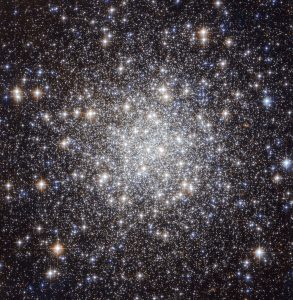Nuova luce sulle prime stelle dell’Universo
Un team di astronomi dell’Università di Notre Dame ha individuato quella che potrebbe essere la seconda generazione di stelle, rivelando nuovi indizi sulla natura dei primi astri nati nell’Universo.
Le stelle massicce di prima generazione, costituite di idrogeno ed elio, hanno prodotto ed espulso gli elementi più pesanti durante il loro ciclo vitale come venti stellari o quando sono esplose come supernove. Quei metalli (in astronomia gli elementi più pesanti dell’elio), hanno inquinato le nubi gassose circostanti, dalle quali in seguito si sono formate nuove stelle. Crescendo l’età dell’Universo cresce anche il contenuto di metalli, grazie alla nucleosintesi stellare e all’arricchimento del mezzo interstellare.
Le stelle CEMP (carbon-enhanced metal-poor stars) sono antiche stelle ricche di carbonio ma povere di metalli, comuni nelle stelle di generazione più tarda. Una sottoclasse di queste stelle viene chiamata CEMP-no.
Jinmi Yoon, Timothy Beers e Vinicius Placco, insieme ai loro collaboratori, hanno dimostrato nel loro studio, pubblicato su Astrophysics Journal, che le stelle a più bassa metallicità, le più primitive, includono una grande frazione di stelle CEMP. In particolare le stelle CEMP-no, ricche di azoto e ossigeno, sarebbero nate da nubi di idrogeno ed elio inquinate dagli elementi prodotti dalle prime stelle che hanno illuminato l’Universo.
“Le stelle CEMP-no che osserviamo oggi, o almeno gran parte di esse, sono nate poco tempo dopo il Big Bang, 13,5 miliardi di anni fa, da materiale quasi completamente non inquinato”, afferma Yoon.
Gli autori dello studio hanno analizzato la composizione chimica di circa 300 stelle nell’alone della Via Lattea. Beers ritiene improbabile che esistano ancora i primi astri nati nell’Universo, ma è possibile apprendere maggiori informazioni sulla loro natura studiando in dettaglio la generazione successiva di stelle, arricchite da elementi prodotti dalle prime “luci” dell’Universo.
[ Barbara Bubbi ]
Nell’immagine l’ammasso globulare Messier 56
http://phys.org/news/2016-12-second-generation-stars-clues-predecessors.html
Credit: NASA & ESA

Lascia un commento